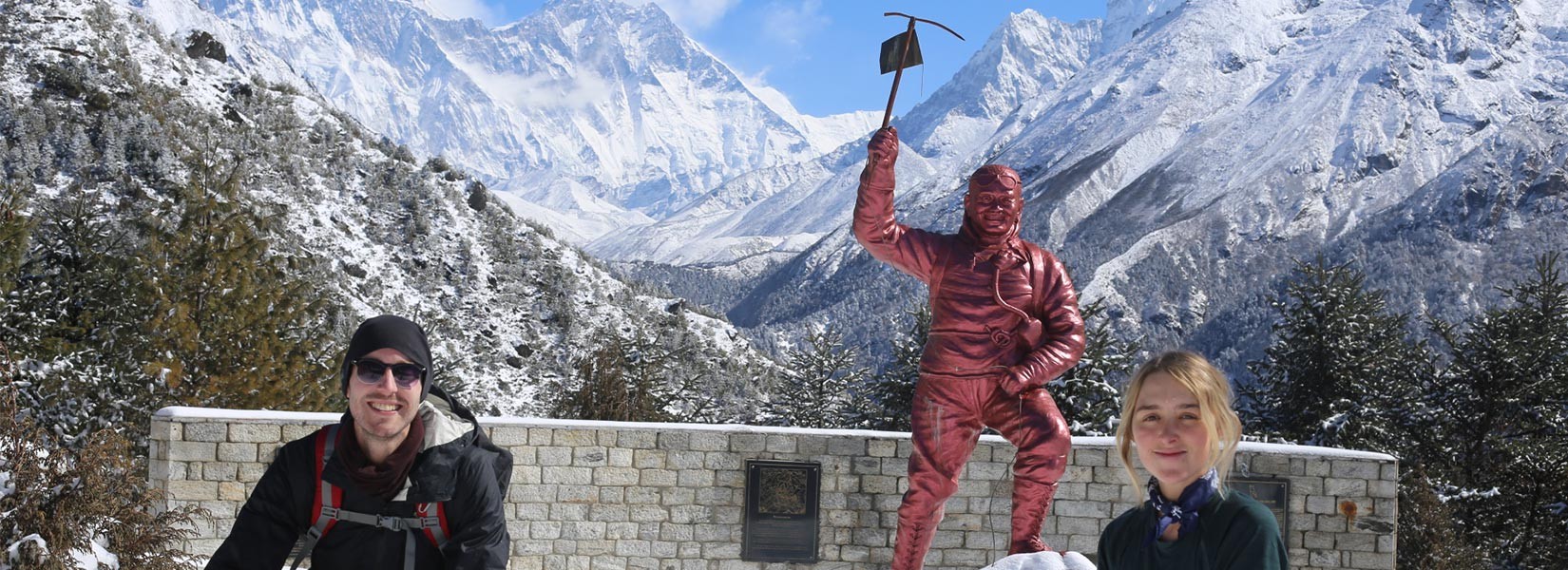Best Time for The Everest Base Camp Trek 7 Days
Everest Base Camp Trek 7 Days is ideal throughout the year. However, trekking in the peak season of Spring and Autumn is perfect for these treks in the region. There are various reasons to take this trek during the peak season, including stable weather and an incredible Himalayan vista.
Spring season - March, April, May
The Spring season is ideal for the trek in the Everest region. There is stable weather all around, with conditions ideal for trekking. The beautiful spring season also provides you with a moderate climate and temperature in the daytime. It is not too hot, humid, or cold, making for a pleasant trekking experience.
Vegetation in the area is quite lush during this time, with many wildlife animals along the trail. The Spring also has the greatest views of the Himalayas that you can observe in clear blue skies. Heavy rainfall, snowfall, and other weather-related challenges are less in the Spring. Hence, it is the best time for the Everest Base Camp Trek 7 Days.
Autumn season - September, October, November
Autumn is ideal for the trek at the high altitude in the region because there is stable weather in place. This Autumn season provides travelers with the best views of the entire Himalayas during this season.
There are clear weather and fewer weather-related challenges during the trek in the season. The advantage of trekking in the season is the cultural exploration opportunities. Local settlements and the people celebrate multiple festivals during the trek. Therefore, you will have a chance to celebrate these local festivals.
Off-season treks - Other Months rather than Spring and Autumn months
The off-season treks in the region are also doable. But it comes with challenges in the area. Various weather-related challenges include heavy rainfall, snowfall, slippery trails, etc. For these reasons, the off-season should be avoided as much as possible. You can also make this season's treks if you love some added adventure. However, you should get proper trekking gear and equipment and follow safety protocols to complete your journey.
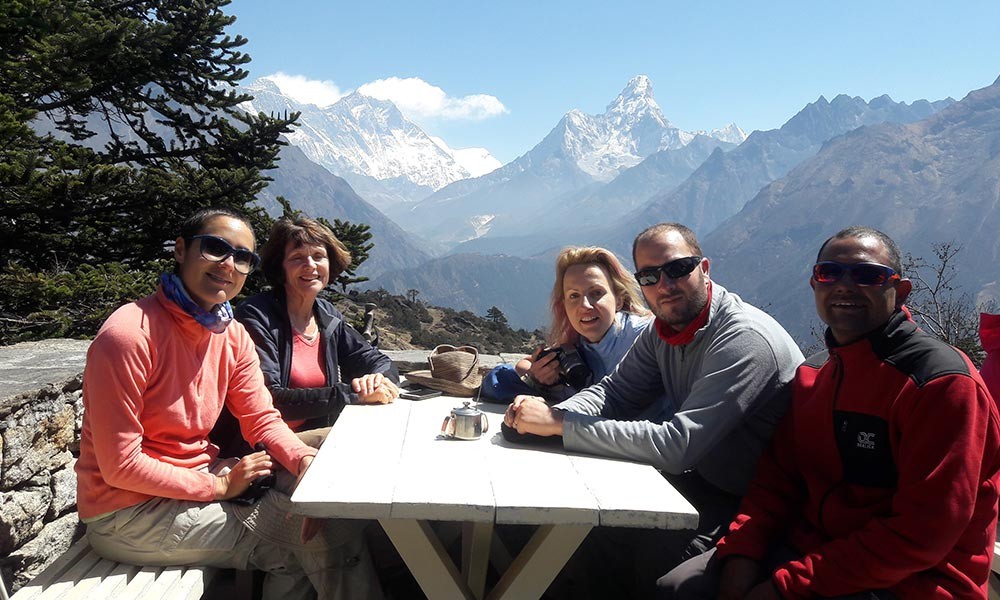
Difficulties Along Everest Base Camp Trek 7 Days
This incredible high-altitude Everest Base Camp trek is widely considered moderately challenging. If you are trekking at a high altitude for the first time, you might also find this trek quite tricky. You will encounter various challenges during your trek in the Everest region.
The first significant difficulty along the trek is altitude sickness, also known as acute mountain sickness. It is quite a common condition that trekkers face due to the changing altitude. Your body will not be able to adapt to the changing needs in such a short span. Hence, trekkers taking this incredible trek are pretty prone to altitude sickness.
To tackle altitude sickness, trekkers must track slowly and gradually, not rush through the terrains. You must also acclimatize at regular intervals and drink lots of water and rest appropriately. You can also carry tablets as a precaution to tackle altitude sickness symptoms, including the Diamox tablets. There are various symptoms of altitude sickness, including nausea, headache, lack of sleep, and lack of appetite.
Another challenging difficulty is facing various uphill and downhill terrain that is quite tricky, especially for first-time trekkers. The trekkers must have proper physical fitness and mental stability to succeed in this challenging trek. Trekkers must also use appropriate gears and equipment for the trek.
Another challenge you might face during the trek is the facilities of accommodations.
These accommodation facilities include teahouses and lodges on the trail. In these basic lodges and teahouses, you will get a room with a warm bed to sleep in. The room is small and generally provided on a sharing basis. There are beds, clean sheets, pillows, and blankets, but you must carry your toiletries. You should carry a sleeping bag safely as frigid weather conditions are at high altitudes.
Besides that, you can also observe a limited variety of menus in the higher altitude region. Since the transportation is through yaks and potters, the meal prices are pretty high, and the menu is also limited. These are the difficulties you will face during the high-altitude Everest Base Camp Trek 7 Days.
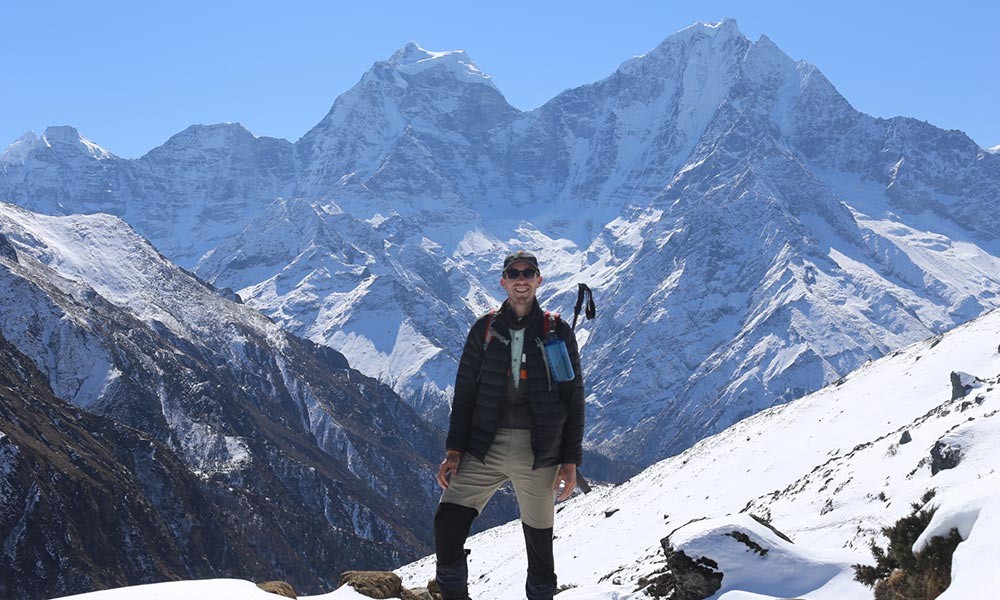
Why Take The Everest Base Camp Trek 7 Days?
There are various reasons you should take this incredible trek in the region. Some of the primary reasons for them are as below:
Magical Himalayan views
The scenic Himalayan vista is a primary reason for this incredible trek in the region. There are snow-capped mountains and other natural beauties in part. Trekkers will also observe the tremendous natural diversities in the area, including waterfalls, lakes, glaciers, and others. If you trek in the peak season, you will observe these natural beauties in clear blue skies.
Adventurous terrain
The trails of the trek pass through uphill and downhill terrain. There are various terrains that you will need to cross along the trail. Trekkers will get an incredible adventure during this trek in the region. The trekkers will get the best experience on an adventure that will test them to the core. You will observe the natural diversities in these natural terrains of the region.
Wildlife exploration
Lush vegetation and rare and endangered wildlife species can be observed along the trail. Therefore, the Everest base camp trek allows you to explore the region's incredible wildlife. You will get to observe the natural habitat of this wildlife along the trail. The beautiful courses of the trek provide outstanding natural diversities. You can experience incredible wildlife in the stunning natural vista of the region.
Cultural exploration
The cultural exploration opportunities along the trails are another reason for taking this outstanding trek. Various cultural settlements along the course will allow you to observe the rural lifestyle of the locals. You can observe the tradition and heritage of the local people with the help of a professional guide. You will also celebrate the local festivals in the peak seasons with them.
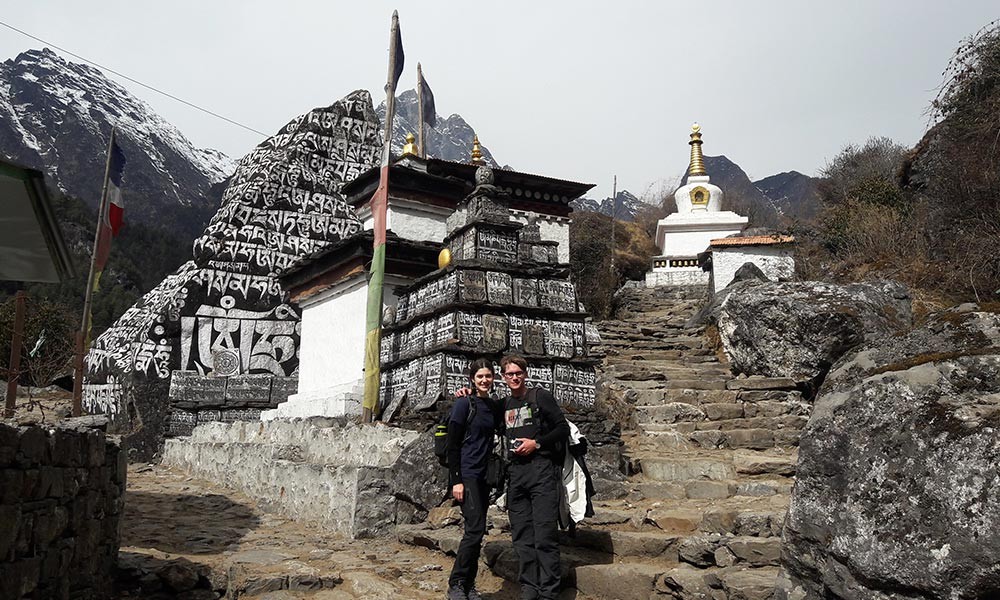
Things To Consider For Everest Base Camp Trek 7 Days
Consider numerous things before you start on this incredible adventure in the region. Some of the essential things that you must consider are as follows:
Acclimatization
Acclimatization is one of the most critical aspects of the high-altitude trekking journey. It is essential for all trekkers under this process as it will help you tackle the changing conditions. Some symptoms include nausea, headache, insomnia, loss of sleep, and loss of appetite.
Hence you will get a safe trekking experience and tackle acute mountain sickness symptoms with the help of this process. In addition to the acclimatization process, you must drink lots of water and rest regularly along the trail.
Trekking gears and equipment
The trekkers taking this incredible Everest Base Camp trek must have proper trekking gear and equipment. This equipment will keep the trekkers safe and comfortable along the trail. The beautiful course will then take you to the high-altitude range of the region.
This means that you will have protection from various aspects during trekking. You can also hire these trekking gears and equipment if you choose to trek only once in the region.
Trekking guide
Trekking guides are your companions during the high-altitude trek. They will help you stay safe with proper navigation along the challenging terrains. Moreover, they will help you in an emergency, like injuries or acute mountain sickness.
They will also help you with evacuation in case necessary. Cultural exploration of the region is also ideal with the help of professional trekking guides.
Trekking permits
Before trekking in the region, you must have proper trekking permits for the high-altitude trek. Various National Park and conservation area permits remain required for the tour in the region. You must have appropriate trekking permits for the restricted areas. For the Everest Base Camp trek, you must get a Sagarmatha National Park permit and Pasang Lhamu Rural Area Permit.
Travel insurance
Trekkers taking these high-altitude terrains must remain covered by proper travel insurance. These travel insurance should include accidents, altitude sickness, damage, loss, theft, and others in the region. You must ensure that the travel insurance covers altitudes above 4000 meters in this high-altitude trek.
Food and Accommodation
Food and accommodation are other essential aspects of the trek and important considerations. There are various accommodation facilities that you will find along the trail. Moving to the higher altitude settlements along the course, you will find that the facilities gradually get depleted.
The teahouses and lodges along the trail provide a room with two beds, mattresses, pillows, and blankets. You will get extra facilities along the tracks like hot water, electric charging, Wi-Fi, etc. However, at a higher altitude, you will find fewer additional facilities. Toilet facilities are generally outside of the tea houses.
The meal facilities generally remain limited to local Nepalese cuisines like Dal Bhat. Dal Bhat consists of rice, cereal, pulses, vegetables, lentils, pickles, etc. You can also have multiple cuisines in the teahouses like momo, chow mein noodles, etc.
Hot beverages like tea, coffee, and garlic soup are popular among the trekkers in the region. Carrying snacks like chocolate bars and protein bars and others to munch on during the trek is also essential. They will help you relieve your hunger and get instant energy for the walk.
Explore our exclusive Everest Region packages, featuring the serene Gokyo Lake Trek, the exhilarating Three High Pass Trek, and the scenic Everest Panorama Trek. Each package is meticulously crafted to offer a unique exploration of the Himalayas, catering to varying levels of adventure and fitness.
Essential Tips for the Trek
- Trek in the early morning so you will arrive at your destination on time.
- You can hire trekking gears and equipment in Kathmandu.
- Acclimatization and regular hydration are essential to tackle altitude sickness.
- Hire professional trekking guides for the trek.
- Get a porter to carry luggage during the trek.
- Train well ahead of the trek with various activities like physical, cardiovascular, and mental exercises.
- Carry various snacks along the path, like dry fruits and protein chocolate bars.
- Carry water purification tablets to have purified water for drinking.
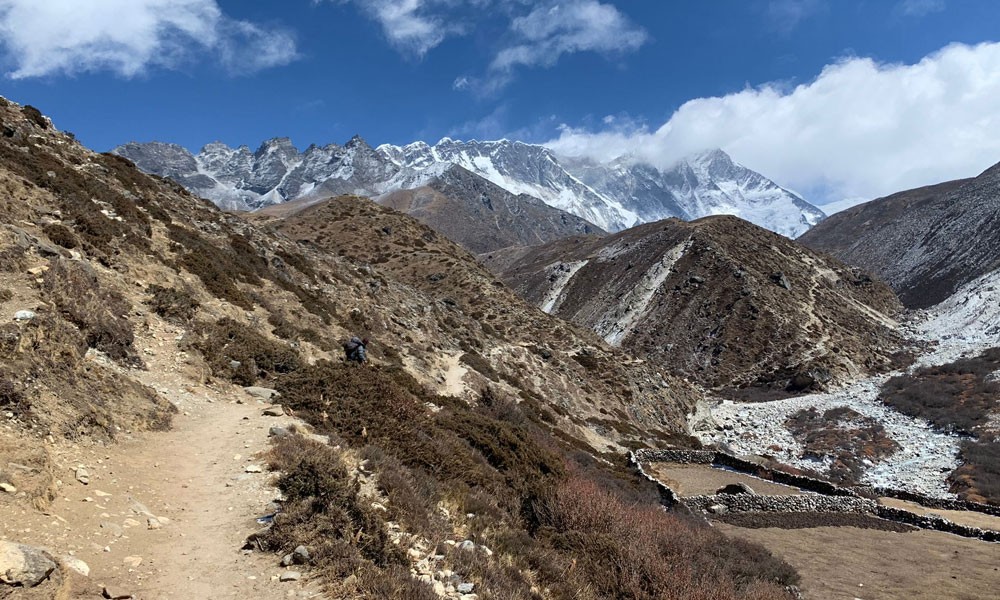 7 Days Everest Base Camp Trek is a compact trekking adventure in the remote parts of the Himalayan nation of Nepal. The trails of this spectacular trek take you through the beautiful natural terrains of the region. The Himalayan foothills of the area are widely known for their fantastic adventure opportunities.
7 Days Everest Base Camp Trek is a compact trekking adventure in the remote parts of the Himalayan nation of Nepal. The trails of this spectacular trek take you through the beautiful natural terrains of the region. The Himalayan foothills of the area are widely known for their fantastic adventure opportunities.

